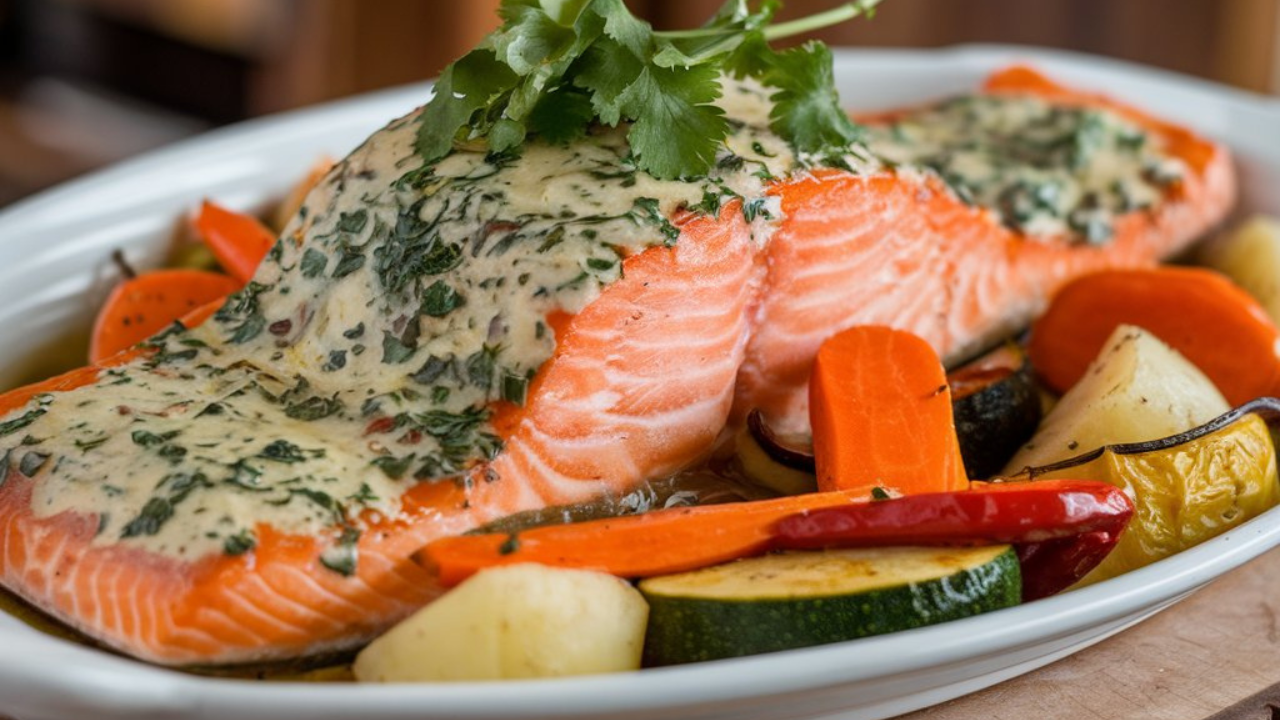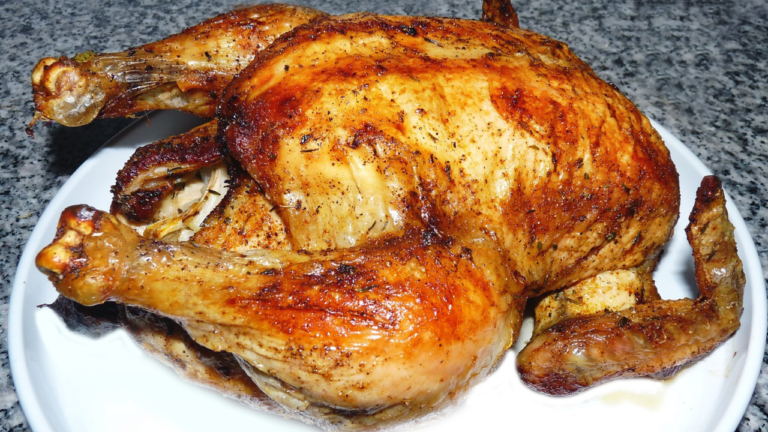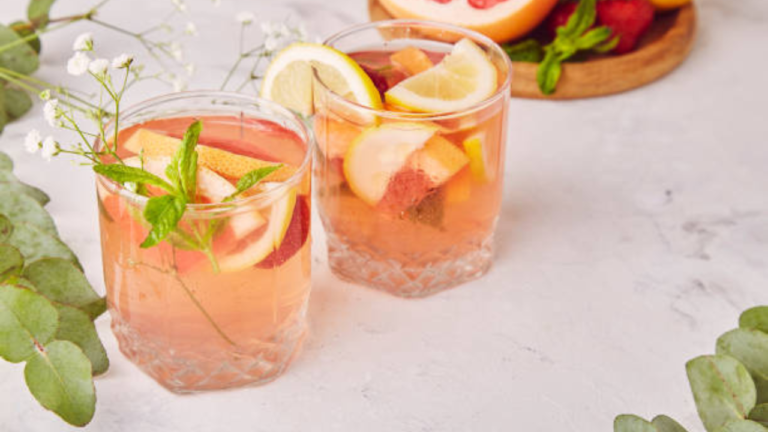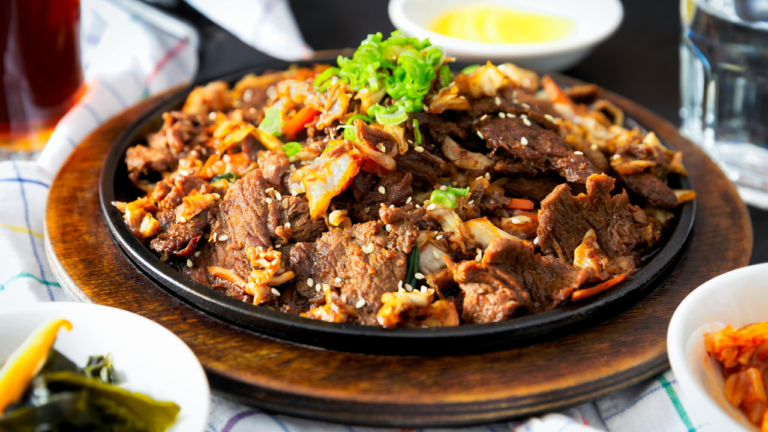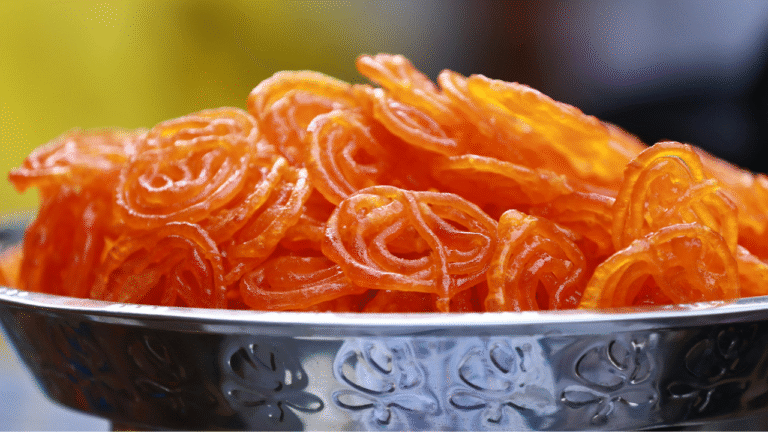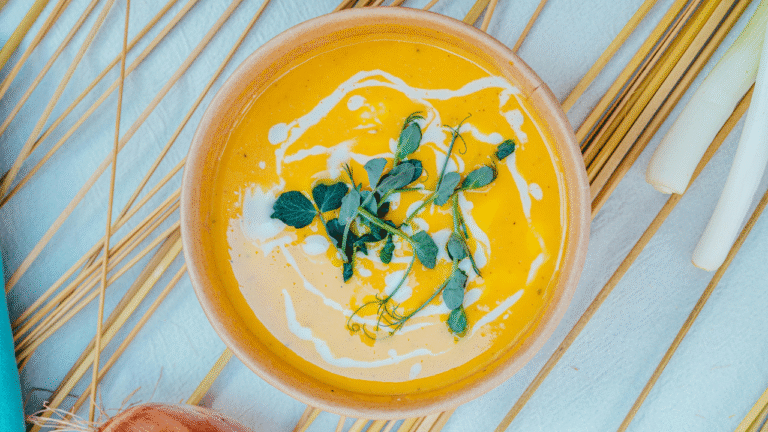Baked Salmon Recipe, A Healthy & Fascinating Meal
Hello there, May I now impress you with my exquisite baked salmon?
The easiest, healthiest baked salmon ever is this one! This delicious salmon recipe is the perfect solution for both busy nights and special occasions. It is made with lemon and garlic for an amazing taste and baked in the oven for flaky tenderness!
I adore salmon so much. I love to cook a lot of chicken dishes and I enjoy thick, juicy steak and delicious beef recipes with comfort, however when it comes down to it, salmon is my meal of choice. I don’t know what to say about this salmon other than that it’s exactly what I’ve described as simple and healthful. However, there isn’t a recipe simpler than this one for consistently baking the most flawless, garlicky, lemony fish.

I particularly enjoy it because of its simple preparation and minimum cleanup, thanks to an optional step of lining the sheet pan. Using a full huge fillet makes for the best presentation for a recipe that takes less than 30 minutes to prepare. There are no specific ingredients or equipment necessary, and no last-minute visits to the shop to locate a difficult-to-find ingredient. This is my go-to salmon recipe. I hope you enjoy it just as much as I do.
If you want to see or buy a quality Microwave Oven for this recipe click right here
Why I Love This Dish,
- It requires only 5-6 ingredients.
- Make it with one hand and sip coffee with the other, which means you can do other tiny tasks.
- I can enjoy a delightful twenty-minute dinner.
- Add garlic and Dijon ingredients to achieve an aromatic and tangy flavor, then bake on a sheet pan.
- The garlic, Dijon, and lemon glaze enriches flavor without requiring marinating time.
- It has an elegant appearance.
- The baking process is pretty simple.
- Baked salmon tastes fantastic.
- It has also turned into one of your go-to recipes.
This recipe is tasty and simple to prepare with minimal waste and cleanup! My spouse thinks I was cooking for hours when I just toss this in the oven with some rice and veggies or when I toss it over some lettuce and tomatoes for a lovely salad when I don’t feel like scrubbing a bunch of dishes after dinner! Your tasty dinner will look as though you put a lot of work into it. I don’t know how many times I’ve made it.

Why Bake Salmon?
- Easy-baked salmon is a wonderful way to reap the benefits of minimal work. The whole process is easy, but it is both delicious and healthy.
- For easy cooking, I prefer using a foil packet or parchment paper.
- Use foil to keep salmon flaky, juicy, and tender. You don’t need to have cooked fish before to succeed with this recipe.
- The foil acts as a taste enhancer. Whatever delicious toppings you put in the foil with the fish will make their way into every tasty bite.
- Prefer not to use foil when baking? Make baked salmon with parchment paper instead!
Health Benefits of Salmon,
Salmon provides a lot of protein, vitamin B, calcium, potassium, and antioxidants. It’s also practically a perfect source of omega-3s, which are found in most fish oil capsules. Salmon is also a fantastic source of animal protein. It has no carbohydrates or sugar and is lower in calories and saturated fats than many red meat alternatives. Salmon is a wonderful option for a meatless day and can help reduce cholesterol. We eat salmon rather frequently, as my several salmon recipes may have indicated!
If you want to see or buy a quality Oil Sprayer Bottle click right here
- Omega-3 fatty acids, which are rich in salmon, can help lower blood pressure, reduce inflammation, and cut risk factors for many diseases.
- It’s a fantastic source of potassium, protein, and selenium, a mineral that improves thyroid function, lowers cancer risk, and maintains bone health.
- Apart from lowering the risk of heart disease, salmon helps to control weight and improve brain function.

Is the Skin On or Off?
Salmon can be roasted with or without the skin. Since the salmon is typically cut that way at the fish counter, I normally bake it with the skin on. Another advantage of leaving the skin on is that it retains more moisture, keeping the fish from overcooking. The skin is easily removed from the fish after baking. You have two options: either take it off of each piece before serving it or wait to eat it until it’s on your plate. Ask the seafood counter to take off the skin before baking the salmon if you want to bake it for a crowd or if you just don’t want to deal with it.
How to Prepare This Recipe of Baked Salmon,
Ingredients Required:
- Salmon Fillets: Look for fresh, pink, and juicy salmon fillets when purchasing them. As an alternative, choose vacuum-sealed frozen fillets that are free of freezer burn.
- Olive Oil: I use extra virgin olive oil, but any type would do. Vegetable oil can also be used in its place.
- Salt: Himalayan pink salt is my personal pick, although kosher salt also works well.
- Italian Herb Seasoning Blend (also known as Herbs de Provence): Any well-known brand will suffice; alternatively, make your own. Try to use these Italian seasonings, it gives rich flavors in this salmon dish.
- Ground Black Pepper: I usually use a bit large quantity, but try starting with a small amount and tasting before adding more.
- Paprika Powder: I use my homemade paprika powder. You can buy it from a good grocery.
- Minced Garlic: You may either mince your own garlic or buy it pre-minced in oil.
- Lemon – A medium-sized lemon would be enough here, but if you want the acidic tartness of an extra lemon, take a larger one.
- Parsley or fresh Thyme for garnishing.

Instructions:
- Grease a large baking pan and preheat the oven to 375 or 400 degrees (as per the fish size). Season the salmon fillets with a sufficient amount of salt and pepper before placing them on the baking pan.
- Mix the herbs, garlic, olive oil, and half of the lemon juice. Spread salmon fillets with this sauce, making sure to coat the salmon completely to prevent any dry areas. Slice the remaining half of the lemon thinly, then place a slice on top of each fish piece.

- When a fork sticks into the salmon, it should come out flaky and glossy after 12 to 15 minutes of baking. If preferred, you can broil the final 2 minutes or so.
- If preferred, garnish with parsley or fresh thyme before serving.

Ideas for Seasoning Baked Salmon,
While salt, pepper, and olive oil are truly all you need for a delicious baked salmon dish, you can easily modify it to use other herbs and spices. There are lots of ways to keep it fresh and interesting.
Salmon with Garlic Butter: The simplest method is to bake salmon with smashed garlic, ground black pepper, and salt, then brush all over the fillets.
Salmon with Cilantro and Garlic Butter: Prepare the garlic mixture as before, then add some chopped coriander or cilantro leaves.

Pesto-Baked Salmon: Dip the fish in the pesto and place the lemon above it before wrapping the foil around it.
Baked Salmon with Hot Sauce: Add hot sauce if you prefer a slightly tangy and spicy flavor and don’t want to add lemon.
Baked Salmon with Spice: Use your preferred seasonings, such as green chilies, oregano, dried or fresh basil leaves, and chili flakes.
Salmon Baked with Teriyaki: Baked salmon goes well with Asian spices! Use teriyaki sauce, either homemade or canned.

Salmon baked with rosemary and lemon: You can also use any other herbs in your refrigerator that are on the verge of browning, like parsley, green onions, or both.
Salmon baked with butter and lemon: use melted butter (I generally use a mixture of half butter and half olive oil) to brush the fish instead.

What to Serve with Baked Salmon in Foil,
Roasted Vegetables: Roasted vegetables are a delightful accompaniment to salmon, as they can be easily cooked together in the oven. One classic option is oven-roasted Brussels Sprouts, which develop a crispy exterior while maintaining their tender texture. If you’re looking for a twist, you can try Roasted Brussels Sprouts with Garlic, infusing them with a savory aroma, or opt for cinnamon-roasted butternut Squash, adding a touch of warmth and sweetness to the meal.
If you want to see or buy a quality Microwave Oven for this recipe click right here
Potatoes: Potatoes make for a scrumptious pairing with baked salmon. You can prepare Oven Roasted Potatoes, which develop a golden and crispy exterior, enhancing their natural flavors. Alternatively, Garlic Mashed Potatoes provide a creamy and flavorful contrast to the tender salmon, creating a delightful combination of textures.

Asparagus: Asparagus is a classic vegetable choice to accompany salmon. You can choose to roast the asparagus, which brings out its natural sweetness and imparts a delicious charred flavor. Another option is to indulge in a creamy Asparagus Soup, offering a velvety and comforting addition to your salmon dish.
Rice: Rice serves as an excellent companion to salmon. For a citrusy and elevated twist, Lemon Rice makes a delightful choice, infusing the dish with vibrant flavors. Alternatively, if you prefer convenience, Instant Pot Brown Rice offers an easy and nutritious option to complete your salmon meal.
It’s important not to forget that roasting salmon and veggies together can take longer than expected if there’s an additional pan in the oven. Midway through the cooking period, I suggest moving the pans around for more even frying.

I would suggest trying Garlic Salmon if you’re looking for a baked salmon dish that includes vegetables all in one. This recipe yields a salmon that is delightfully soft and moist, and it goes really well with a mix of roasted veggies.
Toss baked salmon with a veggie-loaded grain salad, such as Italian Farro Salad, or Greek salad for those looking for a refreshing side dish. Tender fish and hearty grains combine to make a filling and healthy dinner. A substantial green salad can also be a great side dish, offering a bright and vibrant contrast to the deep tastes of the salmon.
Tips on Baking Salmon to Perfection,
- Avoid overcooking the salmon when baking it in foil, as this is the main guideline.
- Because foil retains moisture, baking salmon in foil or parchment paper allows for some flexibility, but you want to remove it from the oven just before the thickest part is done.
- The fish can be partially cooked through and given a lovely, faintly crispy crust by briefly placing it under the broiler in the oven.
- If your salmon is almost done but not completely cooked and you’re afraid of overcooking it, simply remove it from the oven, cover it, and let it rest at room temperature for a few minutes until it’s done to your liking.
The Optimal Salmon Baking Temperature,
The size and thickness of your salmon will determine how long it takes to bake. For instance, I like to try to purchase wild-caught salmon, which in our store typically translates to coho or sockeye depending on stock levels. Because they are thinner, these kinds cook faster.
I usually preheat my oven to 400 degrees Fahrenheit or 425 degrees Fahrenheit for preparing individual fillets of salmon, which weigh approximately 6 ounces. This is the same temperature that’s used for the Balsamic Salmon and Whole 30 Salmon. The smaller portions can withstand a higher temperature and cook more rapidly.
Nevertheless, I noticed that 400 degrees Fahrenheit was a little too harsh for a 2-pound piece of baked salmon that I attempted to prepare in foil. I tried roasted salmon at 350 degrees F for my next round. It took longer than I had thought, and the finished dish wasn’t *as* moist as I had anticipated. So for a 2-pound side salmon, 375 degrees Fahrenheit works best.

How Long to Bake Salmon?
Usually, a large (2-pound) side of salmon takes 15 to 20 minutes to bake at 375 degrees F. Six-ounce servings should bake at 400 degrees Fahrenheit for 12 to 14 minutes. The thickness of your specific salmon piece will influence how long it takes to cook, so it may take a few minutes longer or less.
To check for doneness, insert a sharp knife into the thickest section of the baked salmon piece. It is done when the salmon begins to flake but still has a little translucency in the center, or when it flakes easily with a fork.
Rewarming & Leftover Ideas,
- My favorite ways to consume leftover cooked salmon are scrambled with eggs, incorporated into a simple pasta dish, or served cold over a salad (I usually let it come to room temperature first). It might also be used in this Salmon Pasta dish.
- Cooked baked salmon keeps for a day or two in the fridge.
- When trying to prevent the salmon from drying out, reheat it slowly and gently. I suggest warming individual servings in a skillet or on low power in the microwave.
- Reheat the salmon in a skillet while letting it reach room temperature. On medium heat, preheat a nonstick skillet. As soon as it’s heated, add the salmon along with a splash of water, and cover it right away. Let the salmon steam for 2-3 minutes, or until it is well heated.
- Let the salmon come to room temperature before reheating it in the microwave. Heat gently over medium-low heat, just until heated all the way through.
Let’s Know about Salmon Varieties,
The Five Salmon Types?
Salmon comes in 5 distinct varieties, which may surprise you. (There are actually seven different varieties, but mostly you’ll primarily find 5.) They can grow to be large, weighing around 128 pounds, or they might be little, weighing about five pounds! Depending on the season, some kinds of salmon live in freshwater, while others stay in saltwater. All five of the primary kinds of salmon are Pacific salmon.
Apart from being redder than other salmon kinds, Sockeye salmon has less fat overall. It’s a popular and delicious variety.
If you want to see or buy a quality Oil Sprayer Bottle click right here

King or Chinook salmon has a high-fat content and is quite expensive. This is probably a fish best found in upscale seafood markets or fine dining establishments. Its mouthful, or texture, is exquisite.
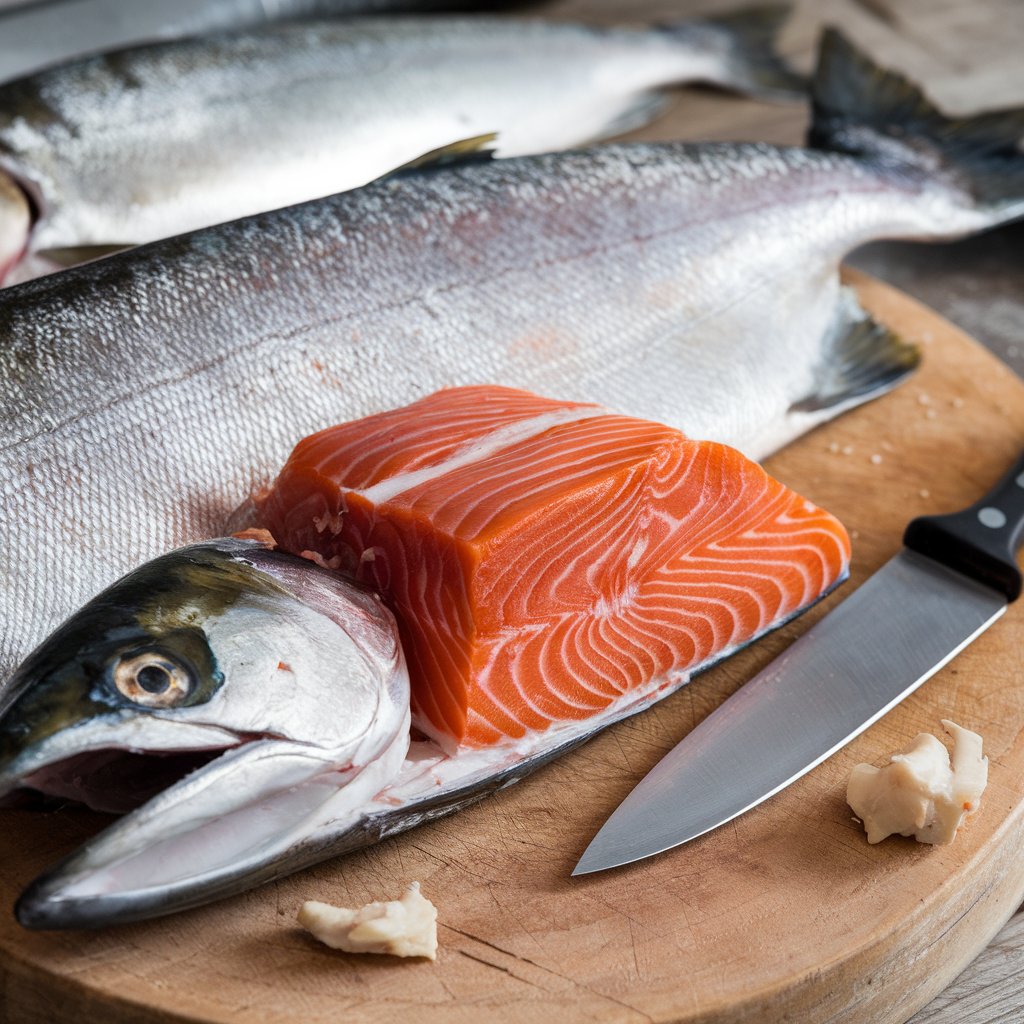
A little, pale variant of the fish is called pink salmon. This is the type of salmon that usually appears in salmon cans and is used in the canning process.

For its roe or eggs, Chum salmon is one of the most popular varieties. These eggs are similar to those seen in sushi rolls.

Another well-liked variety of fish is Coho salmon, which has a softer flavor than other salmon varieties. It’s that silver salmon that you usually see in pictures of fishermen displaying a massive salmon to photographers.

How to Purchase Salmon,
Purchasing salmon is simple. Simply follow these basic guidelines:
- Double-check to make sure it doesn’t smell fishy if you can smell it. There shouldn’t be any fishy smell to fresh salmon.
- Avoid steering clear of fresh salmon that appears bruised, discolored, or dried out.
- The flesh shouldn’t appear pale or anemic; rather, it should have a bright color.
- If you’re buying prepackaged or frozen salmon, be sure the packaging is tightly sealed and not cracked or open in any way.
- If you’re not sure, review the label and avoid products with excessively long ingredient lists or those declared “color-added.”
- If a butcher is available, you may always ask for information on the different varieties of salmon.

Always keep clean your hands & for that you can check this soap dispenser right here
Though baked salmon seems like something you should keep for a special night in, I encourage you to try it on those stressful weeknights as well. Meals on these nights should be well-balanced, healthful, and delicious—possibly even more so than on slower weekend evenings. Baked salmon is one of my favorites because it’s so quick and simple to prepare.

